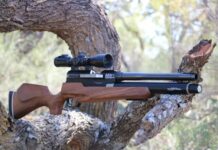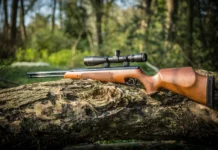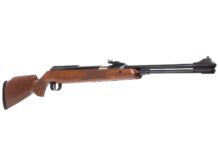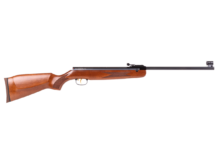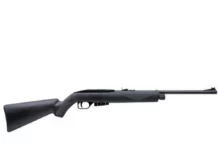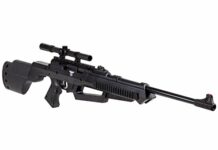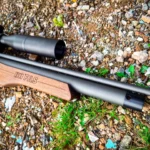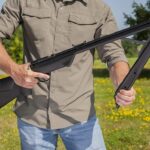Most American households will be familiar with the 5.56/ .223 and possibly its altered 5.56 NATO version. Many people can get confused by these two rounds because they are so similar. Even though the differences between them are small, they could have a significant impact on safety and weapon performance. In this article, we will explore the key differences between the .223 and 5.56 NATO and why they should never be mixed.
Table of Contents
Difference Between 5.56 and 5.56 NATO

The 5.56 NATO was developed from the 5.56 or .223 Remington, as requested by the US Continental Army Command, to have superior long-range performance. However, a rifle chambered for a 223 Rem is not made for the 5.56 NATO.
The most noted is the pressure difference between these two cartridges. The .223 Remington is capable of handling 55,000 psi. Whereas the 5.56 NATO standard rifle cartridge has a thicker case and, as a result, can handle higher chamber pressures of 58,000 psi up to a maximum chamber pressure of 62,366 psi.
Also, a .223 rifle chambers with a smaller load and steeper angle to increase the accuracy. However, this is at the expense of velocity, and as a result, the barrel length is most often elongated to increase the velocity. Just like when we analyzed the 17 HMR and 22 LR we saw how important velocity really is!
A 5.56 NATO chamber has a .125″ longer throat, allowing the 5.56 NATO to have one more grain of powder. This results in a higher muzzle velocity than the .223 Remington yet decreased accuracy.
Who Is The 5.56 NATO Best For?
As the 5.56 NATO was developed for military use, the best use case of this cartridge is for the military. Just like the 6.5 Grendel & 350 Legend, the Military uses these rounds because of there versatility and stopping power. However, because the 5.56 NATO rifles have shorter barrels and higher velocity, it is excellent for self-defense or protection service use.
What Does A 5.56 NATO Look Like?

The cartridge provides a less powerful platform than the 7.62 but also has less recoil, resulting in the ability for better selective fire. Just like we saw with our comparison of the 270 wsm vs 270 win rounds, recoil is important. Even though it has less power than a 7.62, it can still penetrate a .135-inch steel plate at 500 yards.
The 5.56x 45 mm NATO uses .22 caliber and is able to achieve supersonic speed at 500 yards. At the base of the cartridge cases, you will most often find the NATO stamp, revealing that it is, in fact, a 5.56 NATO round and not a .223 Remington round. Check out the 50 GI if you want to see a round with some serious recoil!
A .223 will only have a .223 REM and the manufactures name stamped on the case. Most 5.56 NATO primers also have a stamped ring, a preventative measure for the primer to back out when firing from a fully automatic rifle potentially. We saw something similar when comparing the 44 Henry and 30 Winchester rounds!
Main Difference Between 223 Remington vs 5.56
1) 223 vs 5.56 Stopping Power
Here is the ballistic performance of a 55 gr FMJBT and a 55 gr Nosler ballistic tip bullet of the 5.56 NATO and 223 Rem, respectively. Just like we saw in our analysis of 300 ham r vs 300 blackout, ballistic performance is very important!
55 gr FMJBT (5.56 NATO):
- Velocity: 3,260 ft/s
- Energy: 1,294 ft-lbs
55 gr Nosler ballistic tip (.223 Remington arms):
- Velocity: 3,240 ft/s
- Energy: 1,265 ft-lbs
When comparing the ballistic performance, it is evident that the stopping power of the 5.56 NATO is higher. The 5.56 NATO bullet has a higher muzzle velocity and muzzle energy than the .223. Just like we saw in our comparison of the 308 Rem vs 45-70 increased muzzle energy produces more stopping power! This is understandable as the 5.56 NATO was designed for combat and inflicting serious internal damage to soft tissue.
The 5.56 NATO also has a green tip round alternative, which is a 62-grain bullet with a lead or steel core. These higher-grain bullets are designed specifically to have a higher stopping power than the 55-grain bullets. We saw in our post on 2506 ballistics just how important a high stopping power round can be!
2) 223 vs 5.56 Accuracy
The .223 Remington has an inherent accuracy, as it was designed specifically for hunting and sporting purposes in 1957. The 5.56 NATO still upholds the basic characteristics of the .223 Rem, but the enhancement of velocity and energy was at the expense of accuracy. Just like we saw in our comparison of the 300 Blk vs 6.5 Grendel rounds, accuracy is everything!
So if you are looking to shoot a grouping of less than 4″ at 300 yards, the best chances are you will succeed with the .223 as opposed to the 5.56 NATO.
3) 223 vs 5.56 Which Is Better For Hunting?
As these two cartridges are so similar, there is little to differentiate them in terms of which is best for hunting. Nonetheless, considering that both these cartridges will be used on similar-sized game. And the accuracy of the .223 Remington is markedly better, especially with bolt action rifles at long range. It is evident that the .223 Rem is the better hunting cartridge.
The AR-15 is my weapon of choice when I go varmint hunting as it is so accurate. The ammo is relatively cheap, and I reload all my rounds with custom loads for enhanced accuracy. If you want a scope with a fixed front sight for your AR-15, feel free to read our detailed article.
Is It Dangerous To Mix 223 and 5.56?
Considering that the NATO round fires at higher chamber pressures than the standard .223 Remington, mixing these two cartridges can be extremely dangerous for both you and your rifle.
A .223 rifle cannot handle the higher pressure obtained when firing a NATO cartridge because the .223 is built to handle lower-pressure rounds than the 5.56 NATO. The pressure could reach 65,000 or more, far above the .223’s capabilities. This could damage your grooves in the barrel, or the barrel might even explode, causing life-threatening damage to the shooter.
A .223 round can be fired from a 5.56 NATO rifle, yet it is not advised, especially in rifles with a 14.5″ or shorter barrel length. The rifle will not cycle properly due to the lower powder load of the .223 and decreased pressure build-up.
When purchasing your rifle, always check which rounds it is rated to safely fire. It will often state the .223 or the 5.56 NATO on the side of the rifle.
Frequently Asked Questions
The Bottom Line
There are very few differences between these two cartridges, and it is easy to see why people can get confused. However, it is safe to assume that the .223 is the better hunting cartridge and that these two rounds should never be fired from the same rifle. I wrote an interesting article comparing Winchester’s straight-walled 350 Legend with the 223 Remington if you’d like to read up on that.

